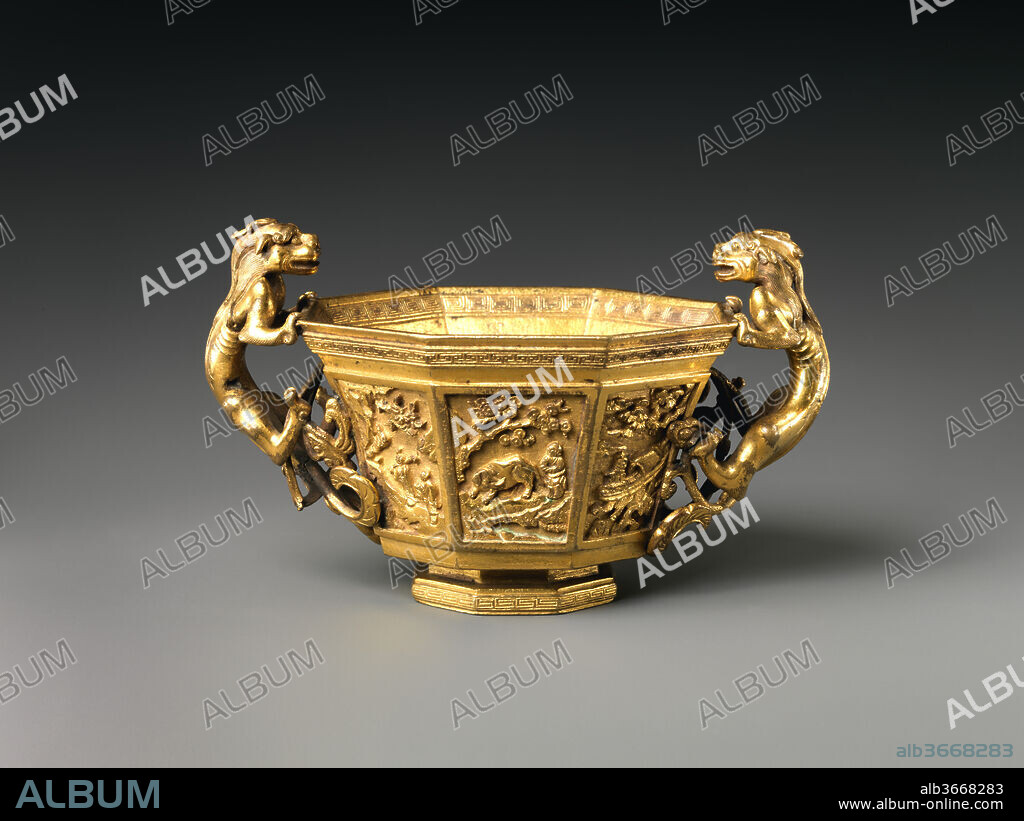alb3668283
Octagonal cup with dragon handles

|
Ajouter à une autre Lightbox |
|
Ajouter à une autre Lightbox |



Avez-vous déjà un compte? S'identifier
Vous n'avez pas de compte ? S'inscrire
Acheter cette image

Titre:
Octagonal cup with dragon handles
Légende:
Voir la traduction automatique
Octagonal cup with dragon handles. Culture: China. Dimensions: H. to handles 3 1/4 in. (8.3 cm); H. to rim (2 1/2 in. (6.4 cm); Diam. of rim 3 5/8 in. (9.2 cm); Diam. of foot 1 7/8 in. (4.8 cm). Date: 17th century.
This cup is extraordinary both for its design and fine casting. The octagonal shape has precedents dating back to the late 7th century when Sassanian silversmiths settled in the Tang dynasty capital of Chang'an and introduced this form into the Chinese repertoire. The twin dragon handles, a motif that can be traced back to the 13th century, remained a popular design in subsequent centuries in different materials, notably jade and rhinoceros horn. The powerful musculature and sinuous bodies of these leonine dragons enable the cup to be dated confidently to the 17th century. Likewise, the distinctive, intricately cast vignettes on the cup's eight facets also bespeak a late Ming date. Each panel presents a different legendary story. The style of these panels resembles carved lacquer, but is only rarely seen on bronzes.
The narratives all relate to Daoist paragons of reclusion and liberated living--a fitting subject for a wine cup. One prominent scene highlights the efforts of a Confucian monarch to recruit one such worthy to serve in office. It illustrates how King Wen of Zhou is said to have personally invited the famous strategist and hermit Jiang Shang (1156-1107 B.C.) to become his chancellor while Jiang calmly continued to fish. The story vividly conveys the wish that men of talent be recognized and valued by the ruler.
Technique/matériel:
gilt bronze
Période:
late Ming (1368-1644) -early Qing (1644-1911) dynasty
Musée:
Metropolitan Museum of Art, New York, USA
Crédit:
Album / Metropolitan Museum of Art, NY
Autorisations:
Modèle: Non - Propriété: Non
Questions sur les droits?
Questions sur les droits?
Taille de l'image:
4200 x 3149 px | 37.8 MB
Taille d'impression:
35.6 x 26.7 cm | 14.0 x 10.5 in (300 dpi)
Mots clés:
 Pinterest
Pinterest Twitter
Twitter Facebook
Facebook Copier le lien
Copier le lien Email
Email
